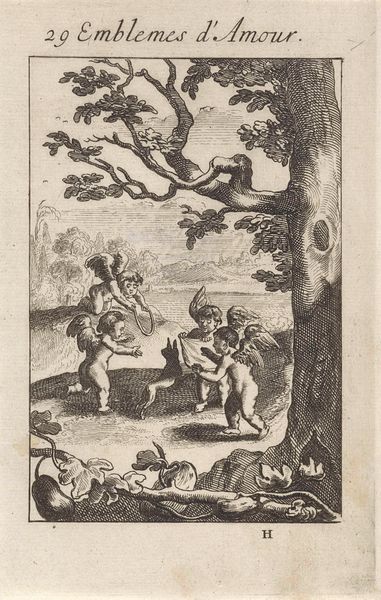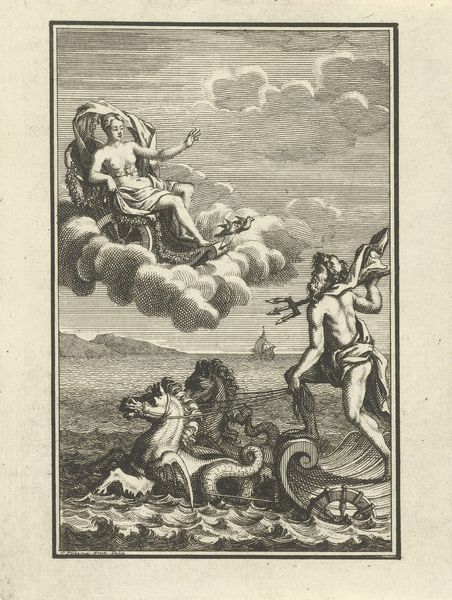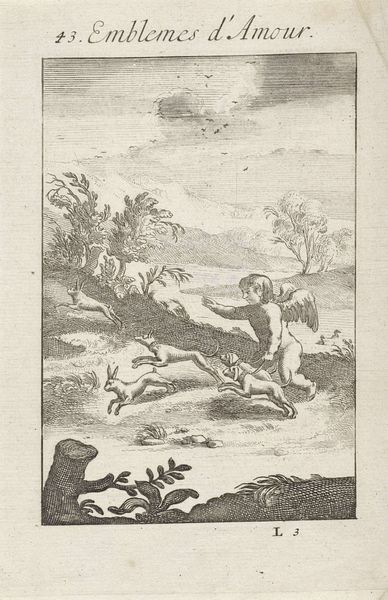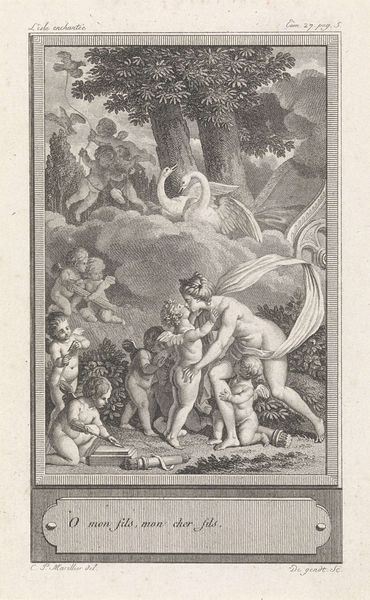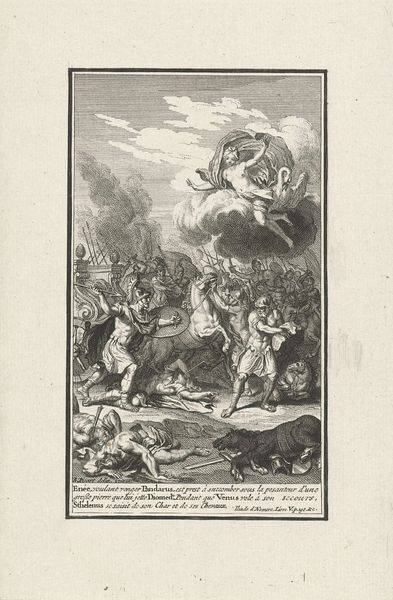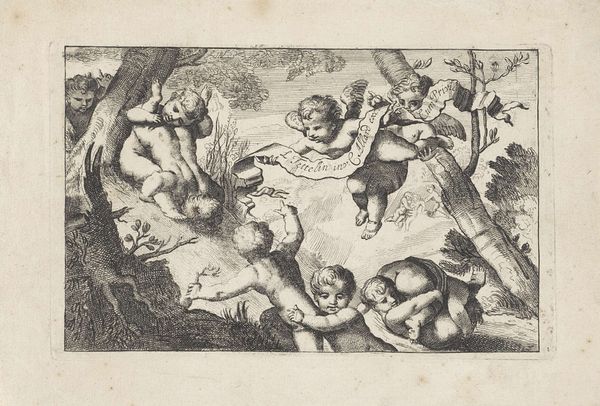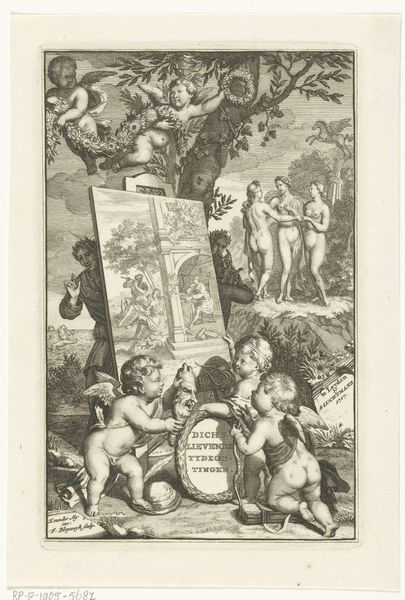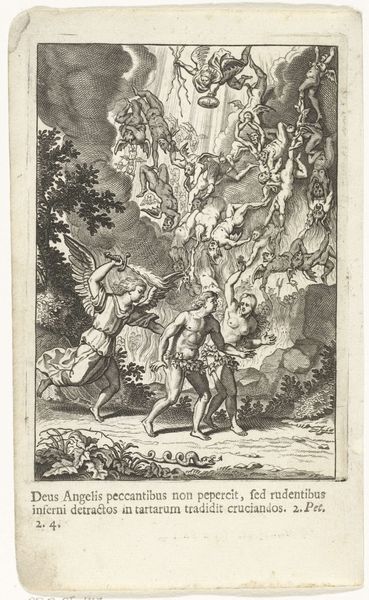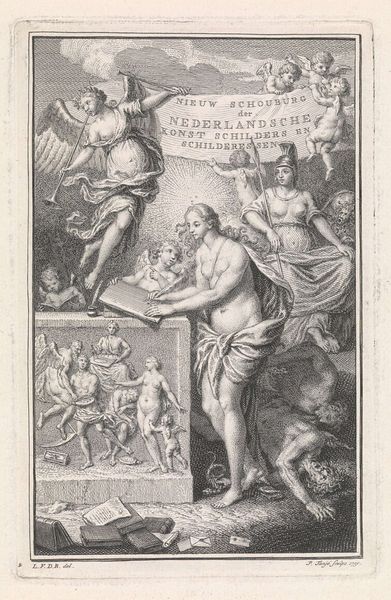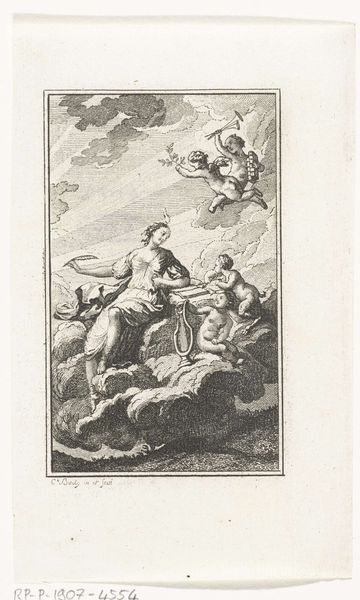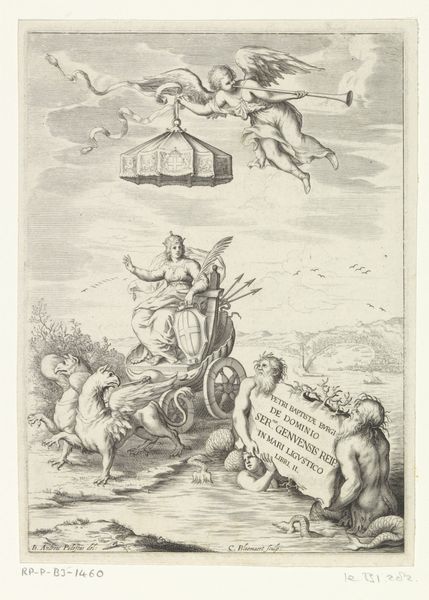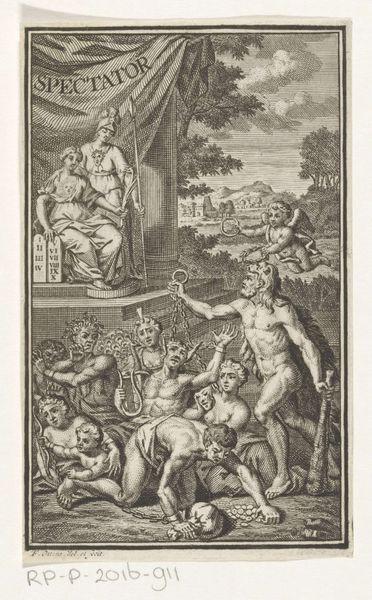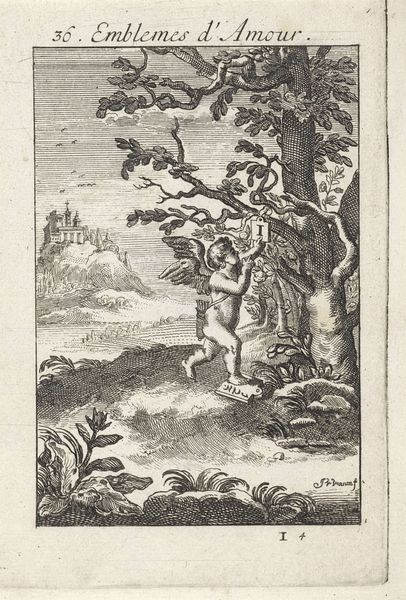
print, engraving
#
allegory
#
baroque
# print
#
old engraving style
#
figuration
#
genre-painting
#
history-painting
#
engraving
Dimensions: height 120 mm, width 72 mm
Copyright: Rijks Museum: Open Domain
This engraving by Pieter Tanjé, made in the Netherlands in the mid-18th century, presents a scene of putti playing on a globe. The image draws on the established visual language of the period, using classical motifs to convey ideas about innocence, playfulness and perhaps even dominion. Globes were a common symbol of power and knowledge, representing the world as it was understood at the time. The putti, or cherubic figures, frolicking on and around it, suggest a sense of carefree abandon but also perhaps the power and influence of childhood, or innocence, over the world. The image speaks to the cultural and intellectual climate of the Dutch Golden Age, with its emphasis on trade, exploration, and scientific discovery. Dutch artists often infused their work with symbolic meanings reflecting social values and cultural norms. Historians consult a variety of sources, from period literature to trade records, to decipher the full meaning of such images. What do these putti represent? How does the image reflect the relationship between the Netherlands and the wider world in the 18th century? These are just some of the questions that arise when considering the social life of this image.
Comments
No comments
Be the first to comment and join the conversation on the ultimate creative platform.
